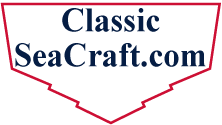
 |
|
#18
|
|||
|
|||
|
Quote:
The 2007 brochure compared the 150 E-Tec and 150 Yamaha 4S with similar results. The E-Tec put out about 165 HP from about 4500-5500, while the Yamaha made about 155 HP over a much smaller rpm range. The 150 E-Tec also had a huge torque advantage down in the 2000-3000 rpm range, so it's no surprise that it easily won the "tug-of-war" against the Yamaha. I've pulled points off those curves and plugged them into a spreadsheet that I can send to anyone that want's it if you'll PM me your e-mail address. When you're looking at acceleration, it's the AREA under the torque vs. rpm curve that counts! When comparing an engine with lots of low speed torque and a flat torque curve to a "peaky" engine with higher peak torque but less area under the torque curve, the flat torque curve engine will win every time, all other factors being equal. With the Zukes, they've changed the "other factors" and gone to more gear reduction to increase torque at the prop, allowing them to use a much larger slower turning more efficient prop, which helps to compensate for less torque at the powerhead. Putting a lower pitch prop with more blade area on ANY engine will tend to improve low speed acceleration, although at the expense of maximum boat speed. The low speed planing ability and torque vs throttle sensitivity Connor mentioned is a little bit different. I think what he's experienced is the difference between a small displacement/high output/high rpm engine vs a MUCH LARGER displacement/low specific output/lower rpm engine. The larger engine will tend to have more torque at ANY throttle setting just because of it's displacement, and will therefore be more stable under conditions of varying load, such as going up and down hill in a big following sea. Denny
__________________
'72 SeaFari/150E-Tec/Hermco Bracket, owned since 1975. http://i188.photobucket.com/albums/z...Part2019-1.jpg |
|
|